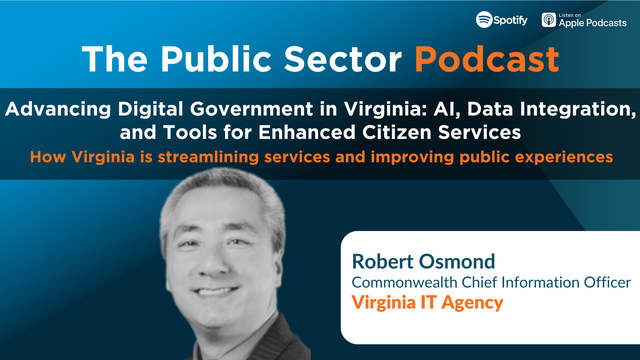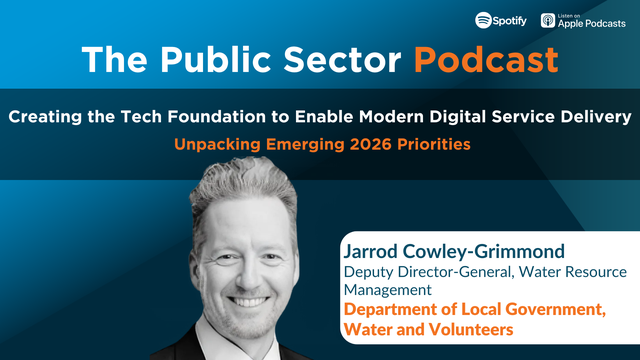Government Keynote:

At our recent NZ National Insights Virtual Event – Andrew Stephen, an Enterprise Architecture Consultant at the Department of Internal Affairs (DIA), explored DIA’s Role in Maximising New Innovation & IT Initiatives to Deliver NZs Digital Inclusion Strategy
Understanding the realities of the digital age
The modern world is filled with digital devices, from desktop and laptop computers to mobile tablets and handheld communication devices that are also phones and are more powerful than the original mainframe computers. Much of the digital revolution began in America in the 1960s, but Andrew Stephen , an Enterprise Architecture Consultant at the Department of Internal Affairs (DIA), says that as much as “the industrial revolution wasn’t just about steam engines, the digital revolution isn’t just about computers.” Instead, it is really about “the opportunities that these devices create for transforming how we live, work and think.” After all, with the handheld devices that we all carry, not only can we communicate more effectively, but we can also get to destinations more efficiently, we can enjoy the journey by listening to music or podcasts on the way, and we can even be informed if there are incidents along the route.
This is just one example, but the changes over the last few decades have been so dramatic that the “traditional concepts of things like property ownership and even our social fabric are being challenged.” And just like the industrial age was about “augmenting human strengths, the digital age is about augmenting human intellect.” As part of that, rather than the mass production of identical products, which was at the heart of the industrial revolution, “the digital era is characterised by personalisation and the tailoring of services to meet the needs of the many, the few and the individual.”
In New Zealand, to keep up with all of these trends, in 2019 the DIA together with the Government Chief Digital Officer, launched the Strategy for a Digital Public Service, [1] which is intended to “describe the changes of behaviour, and the changes that shape the need to make and have a public service that behaves in a digital way.”
[1] https://www.digital.govt.nz/digital-government/strategy/strategy-summary/
Digitising New Zealand’s public service
Like the digital age – which was not only about computers – the strategy “is not only about the adoption of technology or specific technologies.” Instead, it is really about “the behaviours that will enable us to deliver more innovative and targeted services to meet the needs of our customers better than ever before.”
As such, there are five focus areas:
- Integrated services for people and businesses – “So that when a New Zealander needs a service, they don’t have to go from one agency to another to get that service delivered. It should be delivered through a single interface.”
- Flexible, facilitative, and non-hierarchical leadership – “Traditionally we have had a top-down leadership model, which is based on primarily control. There needs to be a change in the way that we lead and manage, designed to support teams and enable them to do their jobs well.”
- Digital foundations – “This is the heart of the matter.”
- Investment that benefits the public service – “We need to act as a unified public service, which was addressed in the revised Public Service Act in 2020.”
- Digital ways of working – “We need to be more innovative.”
Having digital foundations and working in a digital way is at the crux of the strategy and the new era within the public service. What it means, in reality, is that “we need to make extensive use of cloud services. This gives us more flexibility and agility than traditional infrastructure, and many services can be developed quickly and cheaply by integrating low-cost cloud services.” It also means “we need to experiment more.” There will be failures to be sure, but “the risk is minimised by limiting the scope,” yet the learnings from the successes and particularly the failures are immeasurable.
“We need to be ready to walk away from ideas that don’t stand up to scrutiny because, at the end of the day, this will truly improve the services we are delivering.”
This is likely to be difficult, especially if there has been an investment of time and money, but can be achieved if “you have the right people and skills. You can’t wait for a recruitment drive or for approval every time you want to try something.” A unified public service also means that “workers with specialist skills need not be limited to a single agency.” Flatter hierarchies, with managers who understand what all the workers do, make this easier. “It also makes it easier to get answers to questions. We need to have our business owners involved in the work that we’re doing on a day-to-day basis.” Essentially, it is about “establishing guardrails rather than establishing tight control.” This simply means having “parameters without requiring formal approvals.”
For instance, there are companies that “give everybody a corporate credit card.” Whilst that may seem over the top, they do it partly because it “removes friction. If something fails, people just go out and buy the equipment and don’t have to wait for approval or to fill in a form.” But they also do it “to encourage people to actively explore and experiment.” Obviously, each card has a limit, but within that limit, “staff are encouraged to spend money and try things out.” Not every company has the discretionary funds to be able to employ such a measure, but for those that can, it can be exciting because “unless people have the agency and the ability to do such a thing, they’re never going to do it.” At the DIA and in general across the New Zealand public service, this is a novel concept because “we tend to rely on very tight control,” but it may be time to rethink some of those processes.
One of the reasons for the ‘tight control’ is related to “security and risk concerns.” The new digital and agile way of working takes that into account, with “security being addressed early and often.” The earlier security is addressed in the development lifecycle, the easier and cheaper it is to maintain. In terms of security, but also in terms of continuous improvement, “a lot of research has been done to show that diverse and inclusive teams deliver better quality results and better quality solutions.” This means having teams made up not just of diverse cultural backgrounds, but of diverse work experiences too. “Teams with business representation and security people.” In fact, each team should have “security champions – people trained to make decisions and recommendations, and recognise when additional expertise is needed.” It should also be noted that further security and guidance may have to come “from outside your organisation to get better value.”
Overall, digitisation within the New Zealand public service is an ongoing concern and one that has had a lot of thought “with a lot of good references, strategies, and standards.” Much of it is about working together to “design services, operate better as teams to collaborate and co-create.”



































